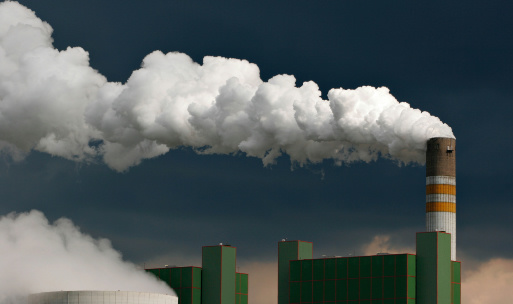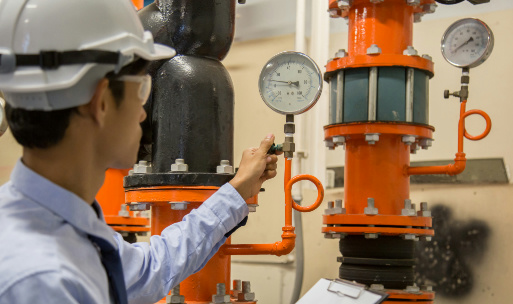Carbon Dioxide: Properties, Uses, Environmental Impact, and Industrial Applications
Carbon dioxide (CO₂) is a colorless, odorless gas that is essential for life on Earth. It plays a crucial role in the carbon cycle, supports photosynthesis in plants, and is a major greenhouse gas contributing to climate change.
Despite being naturally present in the atmosphere, human activities such as fossil fuel combustion, deforestation, and industrial processes have significantly increased CO₂ levels. This rise in atmospheric CO₂ has profound environmental, economic, and industrial implications.
What is Carbon Dioxide?
Chemical and Physical Properties
-
Chemical Formula: CO₂
-
Molecular Weight: 44.01 g/mol
-
Appearance: Colorless, odorless gas
-
Density: 1.977 g/L (heavier than air)
-
Solubility in Water: Forms carbonic acid (H₂CO₃) in solution
-
Boiling Point: -78.5°C (sublimates directly from solid to gas)
-
Non-Flammable: Does not support combustion
Carbon dioxide is a linear molecule, meaning its structure is O=C=O. It is non-toxic at low concentrations but can be harmful in high amounts, leading to asphyxiation in confined spaces.
Natural and Industrial Sources of CO₂
Natural Sources of Carbon Dioxide
Carbon dioxide is produced and absorbed through natural biogeochemical processes, such as:
-
Respiration: Animals, humans, and microorganisms exhale CO₂.
-
Photosynthesis: Plants absorb CO₂ and convert it into oxygen and glucose.
-
Volcanic Activity: Eruptions release large amounts of CO₂ from Earth's mantle.
-
Decomposition: Organic matter breaking down releases CO₂.
-
Oceans: CO₂ dissolves in seawater, acting as a massive carbon sink.
Human-Caused (Anthropogenic) CO₂ Emissions
Human activities have drastically increased CO₂ levels, leading to climate concerns. The main sources include:
(a) Burning of Fossil Fuels
-
Coal, oil, and natural gas combustion releases vast amounts of CO₂.
-
Power plants, industries, and vehicles contribute significantly.
(b) Deforestation
-
Trees absorb CO₂; cutting them down reduces carbon capture.
-
Burning forests releases stored CO₂ back into the atmosphere.
(c) Cement Production
-
The chemical reaction to make cement releases CO₂.
-
Cement plants contribute around 8% of global CO₂ emissions.
(d) Industrial Processes
- Steelmaking, refining, and chemical manufacturing emit CO₂.
(e) Agricultural Practices
- Livestock respiration and soil management increase CO₂ emissions.
Industrial and Commercial Uses of Carbon Dioxide
Despite being a greenhouse gas, carbon dioxide has many beneficial applications in different industries.
Food and Beverage Industry
-
Used to carbonate soft drinks, beer, and sparkling water.
-
Forms dry ice, used in food preservation and transport.
-
Inert gas in food packaging to extend shelf life.
Medical and Healthcare Applications
-
Used in minimally invasive surgeries (laparoscopy) to inflate the abdomen.
-
Component in respiratory therapy to stimulate breathing.
-
Mixed with oxygen for controlled ventilation in hospitals.
Fire Suppression Systems
-
Used in fire extinguishers as CO₂ displaces oxygen, smothering flames.
-
Effective for electrical and chemical fires.
Industrial Manufacturing
-
CO₂ is used in metal welding as a shielding gas.
-
Dry ice blasting is used for industrial cleaning.
Oil and Gas Industry
- Used in enhanced oil recovery (EOR) to extract crude oil from reservoirs.
Agricultural Uses
-
Boosts plant growth in greenhouses by increasing CO₂ levels.
-
Helps in pest control through CO₂ fumigation.
Refrigeration and Cooling
-
Dry ice (solid CO₂) is used in transport refrigeration.
-
CO₂-based cooling systems are emerging as eco-friendly alternatives to HFCs.
Carbon Dioxide and Climate Change
The Greenhouse Effect
CO₂ is a major greenhouse gas that traps heat in Earth’s atmosphere, leading to global warming.
-
Pre-Industrial CO₂ Levels: ~280 ppm (parts per million)
-
Current CO₂ Levels: Over 420 ppm (as of 2024)
-
Main Contributors: Burning fossil fuels and deforestation
Consequences of Excess CO₂
-
Rising global temperatures → More extreme heatwaves.
-
Melting glaciers and rising sea levels → Threatening coastal cities.
-
Ocean acidification → Harms marine life and coral reefs.
-
More intense hurricanes and wildfires → Increased natural disasters.
Reducing CO₂ Emissions
To combat climate change, reducing CO₂ emissions is crucial. Methods include:
-
Renewable Energy: Transition to solar, wind, and hydro power.
-
Energy Efficiency: Improve fuel efficiency and reduce waste.
-
Reforestation: Plant trees to absorb more CO₂.
-
Carbon Capture and Storage (CCS): Trap CO₂ emissions before they reach the atmosphere.
Carbon Capture, Utilization, and Storage (CCUS)
Carbon Capture Technologies
CO₂ can be captured from power plants and factories before being released into the air.
-
Post-Combustion Capture: Extracts CO₂ from flue gases.
-
Pre-Combustion Capture: Captures CO₂ before fuel combustion.
-
Direct Air Capture (DAC): Removes CO₂ directly from the atmosphere.
Storage Methods
-
Underground Injection: Stores CO₂ in deep rock formations.
-
Mineralization: Converts CO₂ into solid carbonates.
Utilization of Captured CO₂
Instead of storing CO₂, industries can repurpose it for:
-
Synthetic fuels (methanol, biofuels).
-
Carbonated beverages.
-
Construction materials (carbon-negative concrete).
The Future of Carbon Dioxide Management
Innovations in CO₂ Reduction
-
Bioengineering: Developing plants that absorb more CO₂.
-
Artificial Photosynthesis: Using solar energy to convert CO₂ into fuels.
-
Smart Grids & AI: Optimizing energy use to cut CO₂ emissions.
Policies and Regulations
Governments worldwide are enforcing policies like:
-
Carbon Taxes to limit emissions.
-
Emission Trading Systems (ETS) for industrial polluters.
-
Net-Zero Goals for 2050 by major economies.
How to Detect Carbon Dioxide

H101-CO2-Z8S-U-40kP Photoacoustic PAS Carbon Dioxide CO2 Sensor
- Carbon Dioxide CO2
- 400 - 5000 ppm (expandable to 40000 ppm)
- Read More
Conclusion
Carbon dioxide is a critical component of Earth's atmosphere, essential for plant life, climate regulation, and industrial applications. However, excessive CO₂ emissions from human activities are accelerating global warming and climate change.
By adopting renewable energy, improving efficiency, investing in carbon capture technologies, and promoting sustainable policies, we can reduce CO₂ emissions and mitigate its environmental impact.
The future of carbon dioxide management relies on innovation, policy action, and collective global efforts to create a more sustainable planet.












